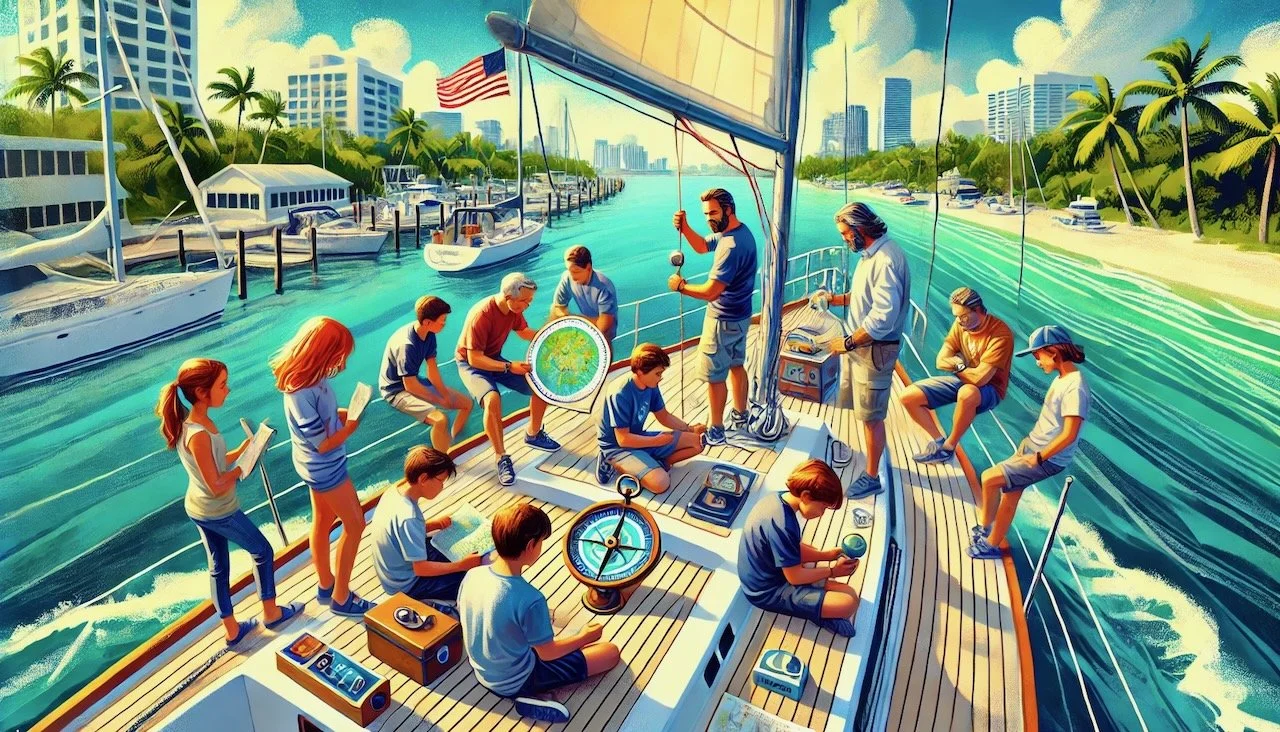adding to the protocol
Who does not want to make this a better world and place? Today, we added to our protocol. One of our coaches, who also studies marine biology, encouraged the students to pick up seagrass on her boat. She's an expert in the area and would tell them what type of seagrass it was. A minor problem was that the student didn't pick up the seagrass alone. There was also a Portuguese Man o' War in there. The student got stung badly. I was nearby in our safety boat, and we pulled up to the sailboat and picked up the student who was crying and obviously in pain. A school representative riding along immediately rendered the student first aid. I called our office and reported the incident as we returned to Port. Meanwhile, our office contacted the student's parents and informed them about the situation. We pulled up to the dock, and the student was escorted to our office, where the first aid continued. Pretty soon, she was feeling a lot better. She was feeling so good that she returned to the boat and went back out to continue what we had set out to do: having fun, learning, and being safe. From now on, kids are not allowed to pick anything out of the water that can't be identified as safe. Lesson learned!
A cohesive group
During the previous episode of our SYSTEM lesson, we discovered some absence of trust and avoidance of accountability among our Next Level students. Our group debriefed on the subject this morning, and the outcome was very positive. I joined in the discussion for a while and asked the question. Do you all believe that the five dysfunctions of a team are correct? One hand was raised, commenting, “Most of them !” It prompted my reply, “Which one?” The student had no answer. Case closed! As a group, we had turned a negative into a positive, and that’s a good lesson to learn.
Teaching Moments
-
A Portuguese Man o’ War (Physalia physalis) is a marine organism often mistaken for a jellyfish, but it’s actually a siphonophore—a colonial organism made up of specialized polyps that function together as a single creature.
Key Features:
Floating Gas-Filled Bladder: It has a translucent, blue, or purple gas-filled bladder (pneumatophore) that sits above the water, acting like a sail to catch the wind.
Long, Venomous Tentacles: Below the surface, it has tentacles that can extend up to 165 feet (50 meters), though they are usually around 30 feet (10 meters). These tentacles are covered in nematocysts that deliver a painful, venomous sting to prey and potential threats.
Drifting Lifestyle: The Man o’ War has no means of propulsion and moves with ocean currents and winds.
Danger to Humans:
The sting can be excruciatingly painful and sometimes dangerous, causing skin welts, allergic reactions, or even breathing difficulties in severe cases.
Tentacles can still sting even after being detached or washed up on the beach.
Where It’s Found:
Warm ocean waters, including the Atlantic, Pacific, and Indian Oceans.
Common in Florida, the Caribbean, and the Gulf of Mexico.
-
Seaweed floating in the ocean is most commonly referred to as Sargassum; a type of brown algae that can form large, floating mats on the ocean surface, providing habitat for various marine life and often found in tropical and subtropical waters.
-
Trust one another
Engage in unfiltered conflict around ideas
Commit to decisions and plans of action
Hold one another accountable for delivering against those plans
Focus on the achievement of the collective results
F.Y.I SYSTEM=SAILING+YOUTH+STEM
@healthylittlehavana, @careelementary, @damianpardod2, @coconutgroveelementary
It’s a win-win
Thank you, volunteers, students, teachers, parents/caregivers, and benefactors for making my dream come true. Removing any of the categories above would have prevented our achievements today from happening. Thank You!
NEXT LEVEL HOMEWORK
Consider this homework. I’m urging the NEXT LEVEL sailors to scroll to the bottom of the page and study what‘s there. From now on, we have to line up together every Saturday we sail
LET’S HAVE FUN, BE SAFE AND LEARN A BUNCH
Lining up! This is what’s you should look like. Each boat is not overlapped, but at the very least, they are in the same picture frame, the sails are trimmed correctly and they are all pointing in somewhat the same direction. Let's do it!
Encourage your sailor to learn more, and please visit our online classroom. https://www.teamparadise.org/classroom and https://www.teamparadise.org/next-level-coaching



